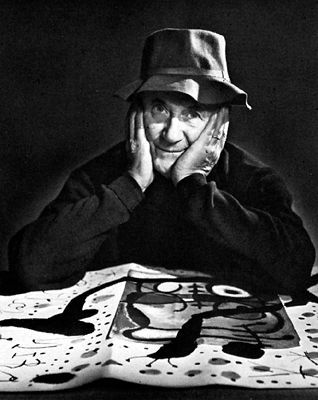
Researchers Reveal Joan Miró Painted Over a Portrait of His Mother

Uncovering the Hidden Layers: Joan Miró’s “Painting” Conceals a Portrait of His Mother
In a remarkable fusion of art and science, researchers at Fundació Joan Miró in Barcelona have recently unveiled a long-hidden secret: beneath the layers of Joan Miró’s abstract 1927 piece titled Painting lies a portrait of the artist’s mother, Dolors Ferrà i Oromí. Nearly a century after the painting’s creation, this revelation sheds new light on the Catalan artist’s evolution and the personal undercurrents that may have influenced his trajectory toward abstraction and surrealism.
Discovery Through Technology
The journey to unearth the portrait began in 1978 when X-rays conducted during a restoration report revealed an image of a woman beneath the vivid blue surface of Painting. At the time, the sitter’s identity remained unknown, though hints of facial features and the suggestion of jewelry piqued scholarly interest.
It wasn’t until a recent detailed study led by Elisabet Serrat, Head of Preventive Conservation and Restoration at the Fundació, that the identity of the woman was confirmed. With the help of technologically advanced tools — including infrared photography, X-ray fluorescence (XRF), and spectroscopy — experts determined that the hidden image depicted none other than Miró’s own mother.
This modern analysis compared the obscured image with a 1907 portrait of Dolors Ferrà i Oromí by the artist Cristòfol Montserrat Jorba, a Catalan painter known to work with the Miró family. The facial resemblance was striking, with features that mirrored the 1907 portrait “exactly,” according to Serrat.
The Artist’s Intention: Erasure, Rebellion, or Resourcefulness?
So why would Miró choose to paint over a portrait of his mother — especially one so detailed and emotionally resonant? Scholars remain divided.
Miró, a leading figure in 20th-century modern art, frequently defied traditional aesthetics. In 1927, the same year Painting was completed, he famously proclaimed his desire to “assassinate painting,” seeking to overturn artistic conventions and embrace abstraction over representation. This ideological perspective, many suggest, could explain his motivation to obliterate a figurative image with abstract forms and deep monochromatic hues.
Interestingly, Miró left behind physical traces of the original painting. Raised clusters of pigment over areas corresponding to a brooch and earrings hint at the underlying figure, revealing he did not entirely erase the past.
Marko Daniel, Executive Director of Fundació Joan Miró, offered a more symbolic interpretation. He posited that the act was “a rebellion not against his parents per se, but against the values they embodied — middle-class aspiration and conservatism.” Miró, who had already turned 32 by the time he painted over the portrait, may have been making a mature, ideological statement rather than a tempestuous or personal one.
Another possibility is more practical: reusing a canvas. The analysis revealed that Miró employed zinc white, a commonly used primer, which suggests he was preparing an already-used canvas for a distinctly new work. This reuse was common among artists, especially during economically challenging times.
A Broader Practice of Overpainting
Miró’s practice of overpainting was not unique to Painting. Between 1940 and 1960, he often painted over portraiture; in the 1970s, landscapes became his primary base layer for new artworks. This recurring approach underscores a continuous effort to renew his artistic vocabulary while engaging — even if subversively — with the past.
What’s more, Miró often left subtle elements of the previous work visible, allowing its ghost to haunt the new painting. These layered artworks serve as metaphors for the ever-changing human psyche and the layered nature of memory, identity, and creativity.
Exhibition: Peering Beneath the Surface
This discovery is now at the heart of the Fundació Joan Miró’s current exhibition, Under the Layers of Miró: A Scientific Investigation, which runs through June 29. The show allows visitors to explore the unveiling process through scientific imaging and contextual documents while gaining insight into Miró’s often cryptic creative methods.
The combination of historical research with cutting-edge imaging technologies has led not just to a significant art historical discovery, but to a richer understanding of the tensions — personal, aesthetic, and ideological — that shaped one of modern art’s most enigmatic figures.
Conclusion
The revelation of the portrait hidden beneath Joan Miró’s Painting provides a bracing reminder of the artist’s complex relationship with tradition, family, and artistic innovation. Whether his act of overpainting was spurred by rebellion, convenience, or ideology, it deepens our appreciation for Miró’s work and the multiple lives one canvas can contain.
As science continues to expose what lies beneath, each pigment-stripped layer tells a new story — and sometimes, as in this case, that story begins at home.